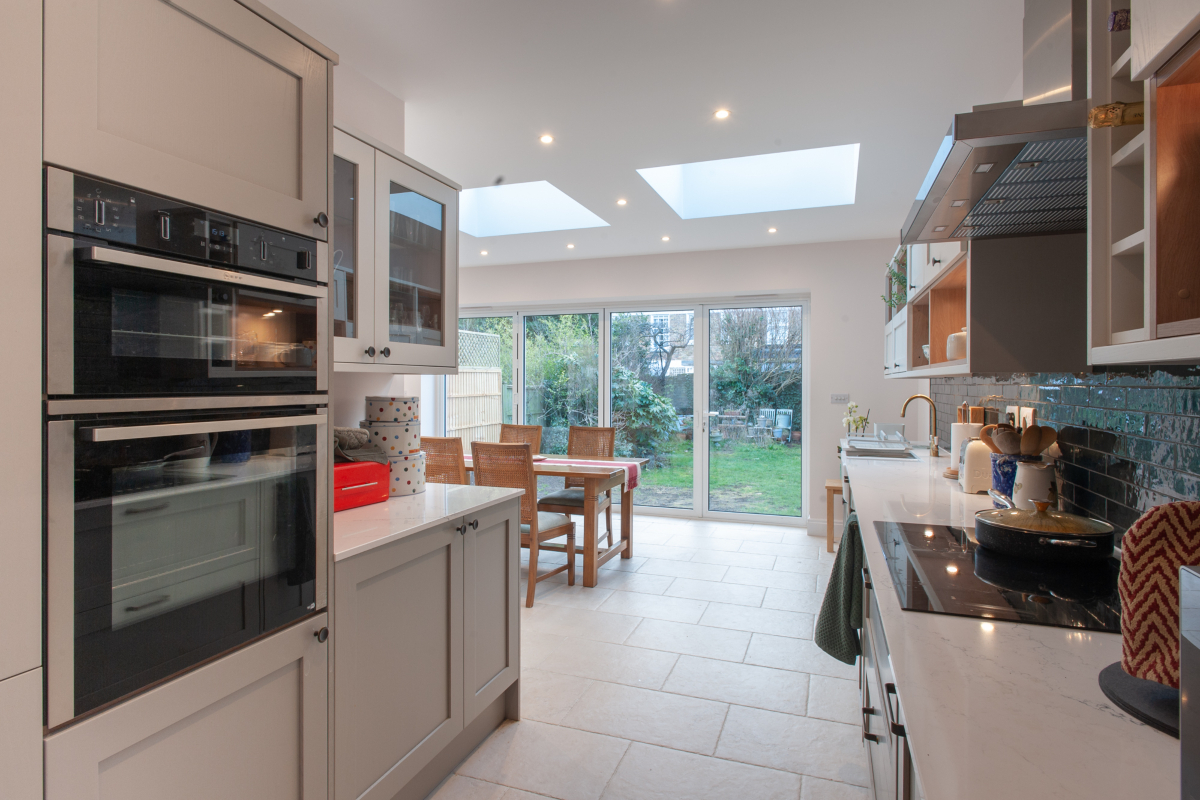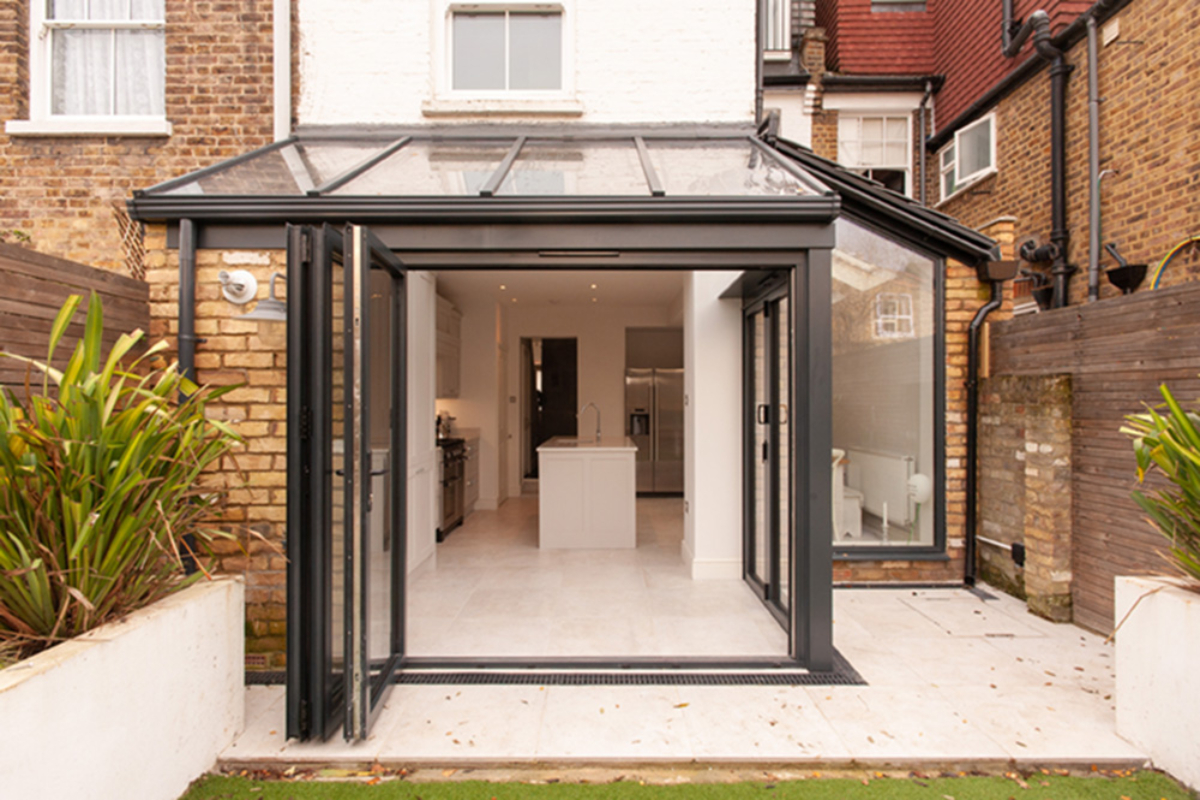You all must have seen those open plan kitchens with food and wine shining on the kitchen island because of the natural light piercing through those massive sliding doors. We have all been there and dreamt of spending our Sunday mornings there with loved ones.
But, it hasn’t been like that since the beginning. The idea of the kitchen has changed drastically in the last few decades. It is no more hidden or pushed away behind sliding doors. Rather, it is one of the social living areas that keeps the house and the family together.
This warm, efficient and comfortable living space homes creativity, communication and cheerful memories alongside some tasty meals. Therefore, the need to plan a kitchen extension is amongst the top demands for homeowners over the past few years.
It is generally a quick process that lasts approximately around 12 week which can completely change your kitchen for good.
To bring that dream kitchen to you, we will provide you with an expert-narrated step wise guide to help you plan a kitchen extension of your own.
List down your ideas

The earlier you create a wishlist, the better. It would be easier to convey all your good ideas and the professionals working on site can take care of your desired electrical or plumbing needs in advance.
Moreover, the professionals can arrange adequate natural light and fit it according to the usage.
Next, you need to decide how you would want to use the extended space. Do you want to make a kitchen diner or just some extra living area? How much wall space would you need? Would you want to customise your kitchen island? Do you want to include a utility room?
A utility room can be an efficient storage space to hide away the cleaning equipment and everything you need to use but not show. You secret little messy room you can stuff things in when there’s a short notice.
Allocate your budget

Setting your budget is central to the overall plan and also beneficial as you can cut short a few things before you start building, instead of cutting corners in the end or leaving some favourite ideas in the end.
One can expect to pay a little more than planned as you might want to make little changes or add more things during the building process. It’s usually advised to add an extra 10% to cover any unexpected bills.
To find out the price, you can apply for a quotation on our website here.
Understand building regulations and seek approval

If you’re working with an architect, which would be true in our case, they should be able to make you understand about the planning permission. It ensures safety and energy efficiency.
You can either get it done by the local authority or Building Control Officer (BCO), which will usually take 8 to 12 weeks, or by a private inspector, which might be quicker.
In case you need more permissions if you’re sharing walls for instance, our experts will let you know after going through the plans and ideas.
Moreover, Good Design & Build provides one-stop service, where we hand over the approval directly in your hands and you don’t have to go through that hassle.
Choose a direction

The picture shown above is a good example to consider from a previous client. The additional dining area is met with abundant sunlight. The windows were installed accordingly and customised book shelves were on the wall space behind the dining table.

Just a little bit of backyard space was used as you see it from the outside and it sheltered an amazing work corner for the family to sit, relax and celebrate.
In other side extensions, where you don’t have window space, you need to consider adding skylights to meet the requirements.
Our experts come up with all the possible extensions based on their survey and we make sure you’re well acknowledged before making any choice for the future.
Paint your canvas

Just as shown above, but in your head. It’ll take some time to actually install things. You can choose your appliance and create a designated space for everything.
If there are kids in the house, you can add specialised safety measures to provide them with a carefree living area. You can place certain windows ensuring smooth flow of sunlight in a corner or on the central kitchen island.
Select your sink structure and surrounding. Make sure it’s decently distant from the gas as both the equipment need some surrounding space to complete tasks smoothly. Once this is done, you need to get your plumbing and electricity in order.
Thereafter, you can move on to adding the aesthetics to not just the wall space but lights, doors and other places.
Insure your insulation

An extension has to be installed with radiators or any heated flooring system to match the temperature with any other room in the original house.
Heated flooring is attracting a lot of homeowners as tiles or marble get too cold to roam around barefoot during winters. Moreover, that will take away the space used by radiators. But a fireplace can be equally significant.
It will increase your bill but also saves you from the stress of moving to a whole new property.
Add your aesthetics

Now this includes a lot more things than you imagine. From tiles to roof, you need to choose every material you install and make sure the quality is good, for your own safety.
If you’re blending the living space with the kitchen, you can customise your carpet area and separate the two with a massive sliding door if need be.
You need to define your storage needs and meet them wisely. It can be hidden under the kitchen island or added secretly as a utility room. We often tend to add as many shelves as the kitchen and the clients permit, but if you have specified needs, we are all ears.
When it comes to material like tiles, wood, and carpet, we are more than happy to recommend the best we know but it’s up to you to put a finger on it.




